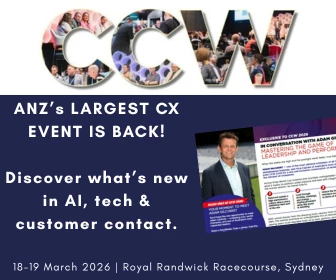Your Next Big Missed Opportunity isn’t AI – It’s Video
People choose to spend hours each day watching videos on the Internet. So why haven’t we built customer journeys to match?
Add bookmark
Do you feel like video is everywhere these days? In response to Tiktok’s success, other social media platforms have been quick to capitalize on the trend and forge their own short form video channel. Linkedin’s adoption of short form video has been met with mixed reviews: for one, its viewership is growing at twice the rate of other types of content on the platform. Comments on some of these video posts tell a different story however, calling the videos disruptive, unpleasant, and irrelevant. Linkedin users and brands with an existing video acumen have seen quick success as the algorithm now prioritizes short video, whereas those who rely on Linkedin engagement but don’t have the skills or materials feel as though the rug has been pulled out from under them.
The affinity for video content goes far beyond social and even traditional media. The rise of video is a response to our evolving digital habits: people have less time, shorter attention spans, and a lack of interest in perusing the abundance of written content available online. According to CCW Digital’s market study focusing on customer preferences in 2025, the most common first action when a product question arises is to search Google or ChatGPT. Unfortunately, Google’s growing reliance on AI algorithms and the integration of generative AI has made navigating the Internet and seeking out veritable information more challenging.
There exists a major opportunity for brands of all sizes to put out content that we know resonates and captures users’ attention in place of traditional resource formats like FAQs, blogs, company information, instruction manuals, and more. The idea of overhauling written content for video may seem daunting and expensive, but it doesn’t have to be. By leveraging the below principles, you can use video to elevate your knowledge management practices and bring your customer experiences into the arena most customers prefer.
Don’t overthink quality
You really don’t need a full production studio to create professional video content. Influencer marketing has demonstrated that the smartphone can be an accessible and appropriate tool for video capture and editing. There is an option for every budget, and while better lighting and equipment will provide a more polished look, resource constraints should never hinder progress when it comes to video. There is also something to be said for barebones content that conveys authenticity, particularly if your brand values tenacity and grittiness. In any case, the best time to start producing video content was yesterday, so don’t get held up in the details.
Make the purpose of your content clear
Even the most valuable video content will get passed over if users don’t know what the video is about. One of the most common mistakes in producing informative videos is the assumption that our customers know why they should watch the video they’re being presented with, whether they come upon it within your knowledgebase or from elsewhere on the Internet. The video’s static thumbnail should always provide the most important context. In the first few moments of the video, address how this piece of content fits into the larger customer journey and why the speaker is sharing it. With customers’ ever-shrinking attention spans, failing to demonstrate the value of the video in the initial seconds is a critical error.
Ensure content is navigable
Part of what has driven the long-term success of Youtube as a video platform is the commitment to supporting features that provide actual value to users. Creating labeled chapters, linkable timestamps, and the ability to fastforward all support customers’ goals of finding the information they need as quickly as possible. Following SEO best practices and ensuring your webpages are error-free is important for getting customers to your content, but once they’re there, they will bounce if they don’t know where to look. You can elevate the navigability of your content in a few ways:
- Share learning objectives or a brief framework of the content covered in each video in a consistent format
- Link related content in an intuitive way that isn’t solely tied to your intended customer journey
- Implement web design best practices to guarantee users can easily find what they’re looking for, even if they end up on a different page on your website
- Recognize that searchability is a must for today’s digital users and take a thoughtful and comprehensive approach to content tagging
Accessibility is non-negotiable
With more people relying on video content, there is all the more reason to make sure it’s accessible for everyone. Captions are the most critical component of video accessibility, but other features like voiceover descriptions and keystroke navigation are immensely valuable. Whether you have two customers or two million, it is significantly easier to build in accessibility as a non-negotiable in video production from the start rather than plan to add it in later. Beyond the importance of providing necessary accommodations for those with disabilities, closed captions and similar measures allow users to derive value from the video without audio, which is paramount in our busy world. If this isn’t incentive enough, there can be real monetary consequences for websites that are not ADA-compliant, and failure to accommodate disabled users is the fastest way to demonstrate your brand doesn’t value customer-centricity for all customers.
Image by Teono on Pexels.






















